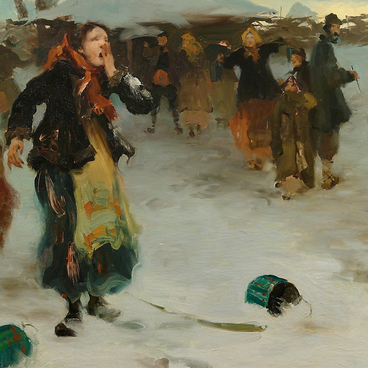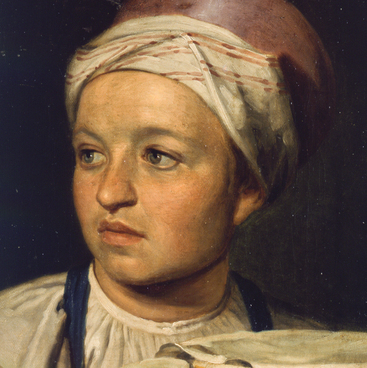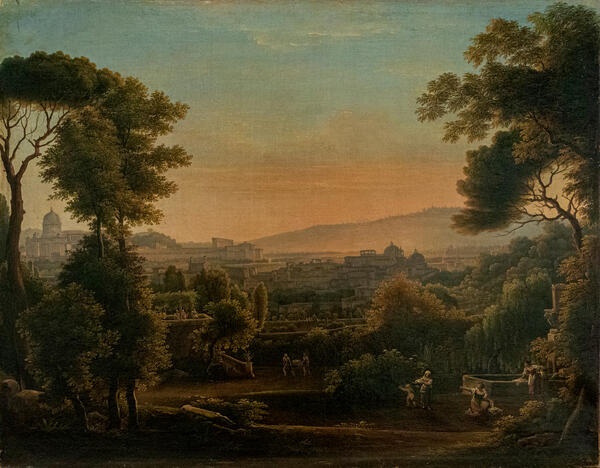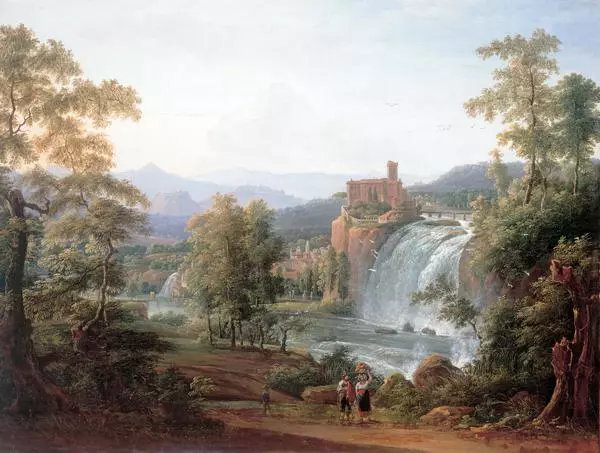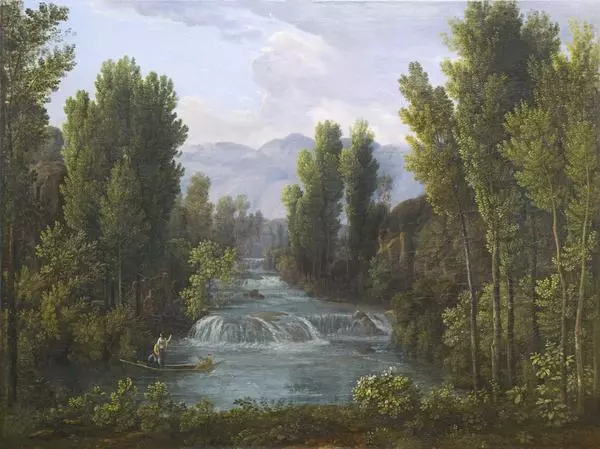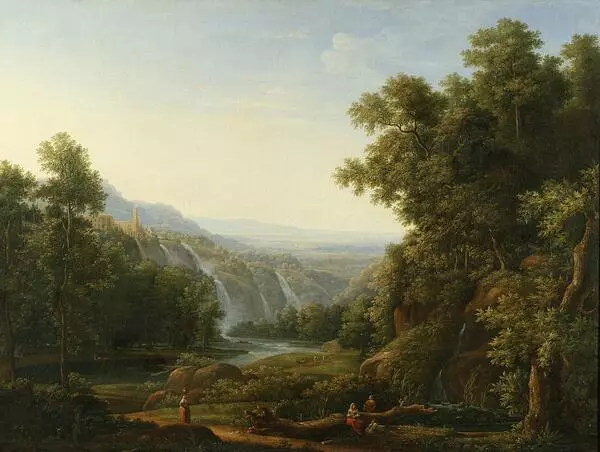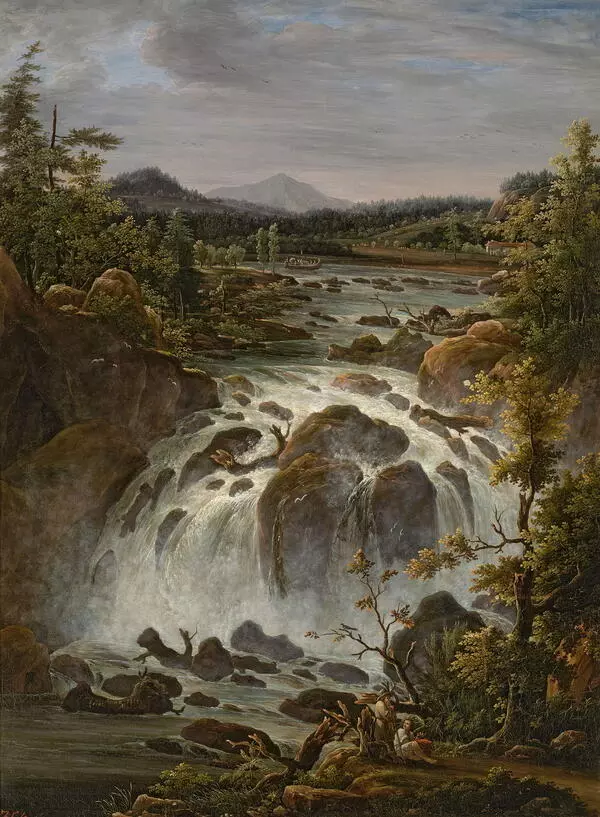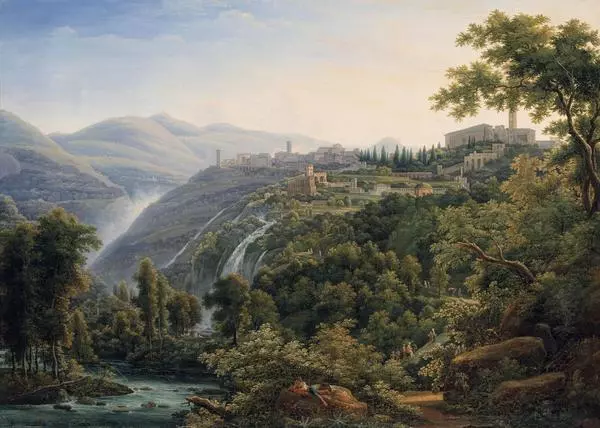Fedor Matveev is a renowned artist in the field of classic landscape painting. His Italian landscapes are a reflection of the ideals of the historical period when a landscape image demanded thoughtful attitude and immaculate taste from both the painter and the audience.
Fedor Matveev was born to the family of a soldier of the Izmaylosky Life Guard Regiment. On account of his painting talent, he was admitted to the Fostering School of the Emperor’s Academy of Art.
Fedor Matveev spent several years studying scenic painting and after that landscape painting in the class taught by Russian painter Silvester Shchedrin. After receiving a grand golden medal for his landscape paintings, in 1779 Matveev moved to Italy as a pensioner of the Academy of Art.
The artist never returned to his homeland. He travelled everywhere in Italy and believed that the Italian nature’s beauty was a sheer perfection. Fedor Matveev created ‘real images’ of the Italian nature from his own travel impressions. In making each painting, he followed the same pattern: symmetrical composition, side ‘backdrops’ - the technique painters employ to give perspective to an image. The master structured perspective by dividing space into three planes: he used brown tones in the first one, green in the second and blue in the third.
Such landscapes were labeled as scenic or devised because Fedor Matveev made them not in the field but in his studio using his memories and seeking to convey the idealistic image of nature. The composition of his works bears strong resemblance to a theater scene. In 18th century many were enamored with theater so the audience grew to love the Matveev’s paintings.
Silvester Shchedrin visited the Fedor Matveev’s studio in Rome and spoke of him as one of the best landscape artists. He praised his artistry, lightness of brushwork and his sharp eye for capturing details all the way to the shape of leaves on various tree species.
In 1806 Italian Landscape the nature is majestically still and quiet. A flatland spreads widely, low hills stretch to the horizon, the Italian stone pines stand proudly. Figures of people – staffage – only accent the nature’s power and beauty. The painting composition tugs your view into the depth - to Vesuvius where a light haze above its summit creates an illusion of slight air movement. While seemingly perfect on a surface Italian Landscape has not transformed into a soulless pattern because the author was able to fill it with undying love for the world.
In 1807 a 50-year old master was, in-absentio, named a Landscape Painting Academician as a reward for View of Naples from Foot of Posillipo that he made in 1806 and sent to Saint-Petersburg. In 1818, after making sure that is was impossible to convince the old and sick artist to return to Saint-Petersburg emperor Alexander I granted him a life-long pension.
Fedor Matveev was born to the family of a soldier of the Izmaylosky Life Guard Regiment. On account of his painting talent, he was admitted to the Fostering School of the Emperor’s Academy of Art.
Fedor Matveev spent several years studying scenic painting and after that landscape painting in the class taught by Russian painter Silvester Shchedrin. After receiving a grand golden medal for his landscape paintings, in 1779 Matveev moved to Italy as a pensioner of the Academy of Art.
The artist never returned to his homeland. He travelled everywhere in Italy and believed that the Italian nature’s beauty was a sheer perfection. Fedor Matveev created ‘real images’ of the Italian nature from his own travel impressions. In making each painting, he followed the same pattern: symmetrical composition, side ‘backdrops’ - the technique painters employ to give perspective to an image. The master structured perspective by dividing space into three planes: he used brown tones in the first one, green in the second and blue in the third.
Such landscapes were labeled as scenic or devised because Fedor Matveev made them not in the field but in his studio using his memories and seeking to convey the idealistic image of nature. The composition of his works bears strong resemblance to a theater scene. In 18th century many were enamored with theater so the audience grew to love the Matveev’s paintings.
Silvester Shchedrin visited the Fedor Matveev’s studio in Rome and spoke of him as one of the best landscape artists. He praised his artistry, lightness of brushwork and his sharp eye for capturing details all the way to the shape of leaves on various tree species.
In 1806 Italian Landscape the nature is majestically still and quiet. A flatland spreads widely, low hills stretch to the horizon, the Italian stone pines stand proudly. Figures of people – staffage – only accent the nature’s power and beauty. The painting composition tugs your view into the depth - to Vesuvius where a light haze above its summit creates an illusion of slight air movement. While seemingly perfect on a surface Italian Landscape has not transformed into a soulless pattern because the author was able to fill it with undying love for the world.
In 1807 a 50-year old master was, in-absentio, named a Landscape Painting Academician as a reward for View of Naples from Foot of Posillipo that he made in 1806 and sent to Saint-Petersburg. In 1818, after making sure that is was impossible to convince the old and sick artist to return to Saint-Petersburg emperor Alexander I granted him a life-long pension.


